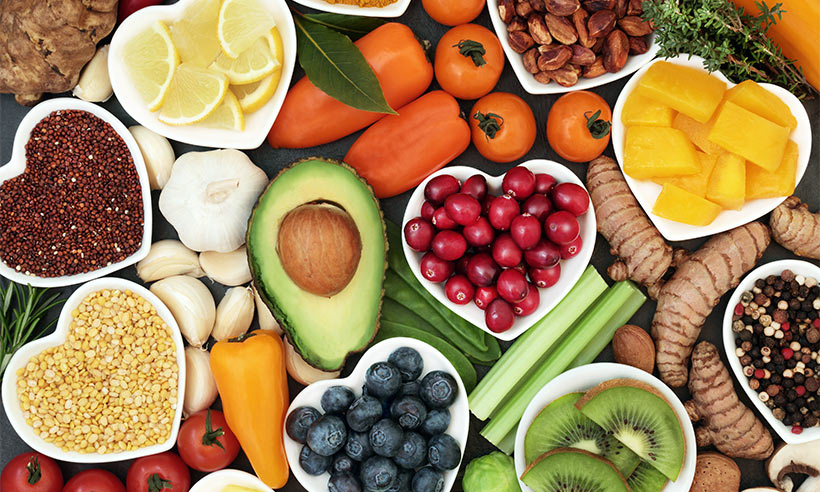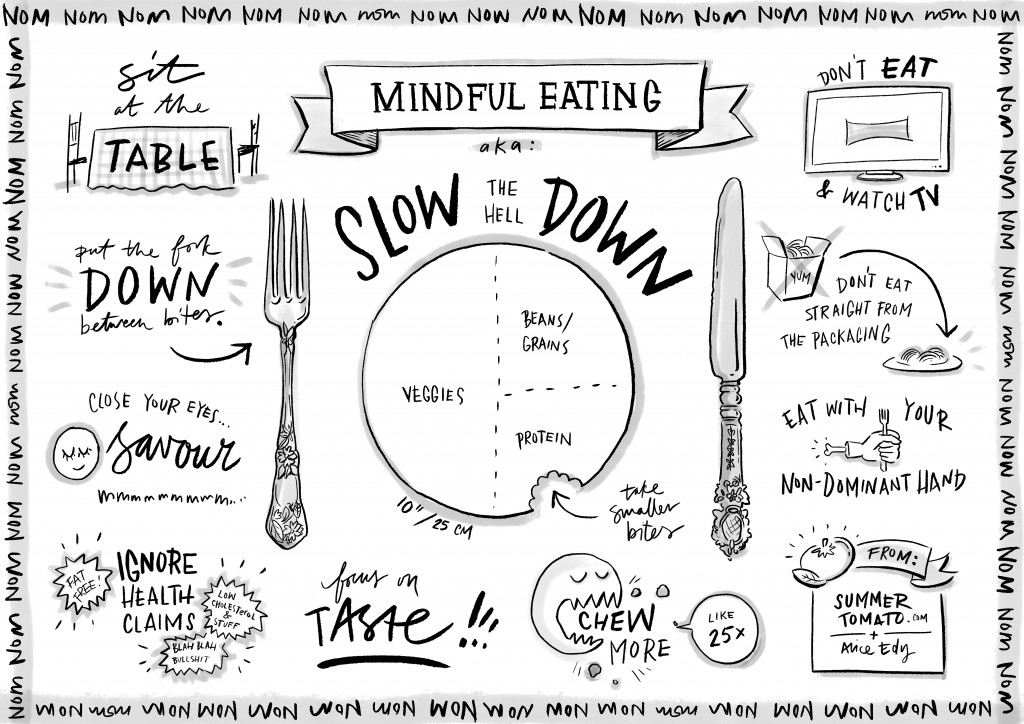
‘Veganism’. A word which is the catalyst for many debates and let’s face it, some pretty hilarious memes. However, as you have probably all noticed, the vegan lifestyle is becoming more and more popular and there seems to be an increased awareness across the board. Hopefully what follows will give you a brief insight into my life as a vegan and the effect it’s had on me, physically and mentally.
My Transition
I became vegan on the 11th of August, 2015, and I have to say it all happened pretty organically. My partner had been a vegetarian for approximately two years so my consumption of animal products had naturally reduced over that duration – but meat, eggs and dairy still made up a fair bit of my diet. She asked if I would be interested in watching a documentary called ‘Earthlings’ which looking back, was probably what started the transitioning process. I’m not going to go into the discussion of ethics – we’ve all seen the videos and anyone with an ounce of compassion can appreciate the moral justification behind veganism. Instead, I’d more like to focus on the health benefits of a plant-based diet, as this was a huge driving factor with me wanting to becoming one of those crazy extreme vegans. After viewing the documentary, I immediately dove into researching the health benefits of a vegan diet and that was “all she wrote”.
Current Diet
Now fast-forward almost 3 years and I couldn’t be happier. Now, I don’t want this article to turn into a solo episode of “This Is Your Life”, because to be honest I could talk about this stuff all day. Instead, I’ll choose three of the more significant diet-related points regarding my experience thus far with veganism.
- Micronutrients – the bottom line is that plant-based diets, when done correctly, will always result in eating a larger variety of foods. More experimentation takes part in the kitchen, more enjoyment is had with cooking, and as well as being very tasty, the meals are more colourful – and more colour means more nutrients! For example, when you’re meeting your protein requirements with foods such as beans, legumes, grains, nuts, seeds and vegetables rather than beef, chicken or fish, it’s pretty safe to say that you’re meeting many other nutrient requirements as well. Long-term, this sets you up for a far healthier and problem-free life, as you reduce your risk of chronic disease. For example, 28% of deaths in the year 2016 in Australia were a result of heart disease. A very significant factor of heart disease is atherosclerosis – the thickening and hardening of vessel walls – and a major cause of this is high cholesterol. But how many people know that dietary cholesterol solely comes from animal products, and that your liver produces enough cholesterol alone for normal bodily function? For me, the proof was in the pudding when, out of curiosity, I had a blood test in February of this year. My results were perfect, and my doctor was pretty impressed. Also, another fantastic change is that I haven’t been sick since becoming vegan, at all.
- ‘Feeling healthier’ – I have a very clear memory of 2014. I was in a ‘bulking’ phase and was consuming around 4000 calories each day. I have always strived to be the healthiest I can be, so even during this phase I was still eating plenty of vegetables and wholefoods. However, I still felt so crap. Every meal was a bigger struggle than leg day, and I was pretty lethargic the entire day. It was hard! Fast-forward to now and eating that same number of calories is entirely different. There is a noticeable difference with bloating and lethargy, and I’m generally more energetic. It’s hard to explain, but I honestly just feel healthier.
- Travelling and eating out – this is something a lot of vegan’s struggle with, but I’ve never really had a problem. Since being vegan, I’ve travelled to over 20 countries with my partner and we’ve never had an issue (thanks to wonderful apps such as HappyCow). Also, almost every restaurant has vegetarian options, and it’s never a difficult task to make these choices vegan-friendly – such as swapping out an egg or dairy product for a suitable alternative. What upsets me is hearing of complaints from the vegan community about restaurants NOT having enough vegan options. At the end of the day, veganism is in it’s infancy, and recognition on a menu in the form of a meal labelled as “Vegan” or “Vg” is a total win in my books. Recognition = awareness, and that’s the beautiful thing.
Current Training and Physical Changes
Training progress, body composition and my style of exercise have also all changed quite considerably. In addition to continuing compound strength training, I now incorporate a lot more gymnastics movements and bodyweight training into my regime and am thoroughly enjoying it. All of my personal bests for bench press, deadlifts and barbell squats have improved considerably, and I have learnt new skills such as handstands and ring muscle-ups. Could I have still achieved this as a meat eater? Probably. But, nothing feels better than going to the gym full of energy (which I didn’t always experience as a meat eater) and feeling like you can conquer anything. Also, it feels great to somewhat prove people wrong. Vegans cop a lot of flak and are always being targeted as ‘protein deficient’ or ‘malnourished’, but I’ve experienced more strength and muscle gain than ever before.
I would like to point out that I am not an expert on veganism and don’t claim to be. As I said, I strive to be well-educated and due to this point, my knowledge on diet and training is forever expanding. Also, my journey with veganism and the positive results I have experienced are just that – mine. Any diet can be done incorrectly, and individuals need to be well-educated with whatever it is they choose to consume.
Thanks so much for reading,
Matt
For information on training with Matt, contact us info@js-pt.com.au or PM us through our socials (Facebook, Instagram). For great content including vegan recipes and training videos, Matt can also be found on Facebook and Instagram.

Are you working long hours and often hunched over a computer? Are you racing to and from back-to-back meetings whilst trying not to think about how you will manage the mass amount of emails coming in? Are you feeling stressed and rundown by the increasing demand on employees? As a fellow corporate professional I truly understand how close to home these are working in the corporate world. I have seen firsthand how gradually these detrimental work habits begin to take a toll on our bodies and minds in the form of stress, tension and sickness. Whilst a mild amount of stress can help us meet deadlines, too much or constant stress can have a significant impact on our overall wellbeing. We spend over one-third of our life at work, that’s why it’s so important that we introduce tools early to help us better handle workplace stress and improve our overall wellbeing in the corporate world.
One of these great tools I have found is Yoga. I’m sure you’ve heard of Yoga, but you may be wondering how turning yourself into a pretzel is going to help you in the workplace? Fair question, so let’s break this down.
Why Yoga?
Everyone has different triggers and reactions to stress and in today’s world, stress is inescapable. The good news is you can develop ways to handle stress through Yoga principles. Numerous studies have shown how Yoga can help to counterbalance the body’s physical, mental and emotional reactions to stress. Yoga is more than merely a physical practice and another element of yoga that is becoming increasingly common in the western world is meditation. Yoga not only assists in the daily pressures placed on the physical body, it can also positively affect your mental and emotional wellbeing through meditation and mindful practices.
You don’t have to be an advanced yogi to learn and apply these tools, so let’s have a look at three quick practices you can implement to better handle stress and improve your overall wellbeing in the workplace.
Desk Yoga
It’s not news that we’re all spending more time hunched over our desks creating tight hips and shoulders, a creaky neck and sore back. All the usual consequences of slouching at your desk for 8 hours a day. Sitting for prolonged periods of time can lead to imbalances in your body that cause poor posture and injury down the road. Yoga can help reduce discomfort and target areas of tension, being an effective way to counterbalance common physical ailments.
I’ve suggested 6 quick and effective stretches you can do at your desk in less than 5 minutes. If you need a visual, google these names for the image of the stretch:
• Seated neck stretch
• Wrist stretch and release
• Seated chair twist
• Desk shoulder opener
• Chair hip opener
• Standing forward fold
Taking some time in your workday to perform these quick stretches might just save you a more expensive trip to the physio!
Mindful breaks
In a world where busyness can be perceived as success, taking a lunch break can sometimes be frowned upon. However, what you do in your lunch break can have a huge impact on your productivity for the rest of the day.
Eating at your desk or spending your break aimlessly scrolling through social media can leave you feeling not very refreshed. Productivity reduces, it’s harder to focus and you may need that extra dose of caffeine to get you through.
So maybe step away from your desk and try a few of these:
• Take a walk around the block without looking at your phone. Really notice what’s going on around you and take in the fresh air.
• Eat your lunch mindfully. Take some time to appreciate the flavor and texture rather than rushing to eat while checking social media.
• Practice some mindful meditation in your break, deep breathing and paying attention to how you’re feeling.
Taking a deliberate break from work with a short walk or a bit of mindful relaxation can have powerful effects on our end-of-day concentration, stress, and fatigue.
Meditation
Research on meditation has shown it has many benefits, such as easing stress and anxiety and inducing feelings of tranquility and calmness. While the body needs constant movement to be healthy, the mind thrives with regular doses of stillness.
Our minds like to be busy to help us accomplish tasks, however this can also cause us stress and lack of focus. The good news is, we can train our minds to be calmer and more focused through the practice of meditation. Spending just 5 minutes in meditation can completely change the way you approach life and how your body responds to stress.
More popularly of late, the western world has been referring to ‘Mindfulness Meditation’. Here’s some quick tools as to how you can implement a 5-minute mindfulness meditation in your day. So set an alarm, and let’s get started.
• Find a comfortable position and close your eyes
• Feel which parts of your body connect to the floor
• Draw your attention to your natural breath, becoming aware of the sensation of each inhale and exhale
• Inevitably, your mind may wander, if it does, draw your attention back to the breath
• Notice the sounds around you
• Notice the temperature of the air on your skin
• If your mind gets carried away in thought, return your focus again to the breath
• When you’re 5 minutes concludes, gently open your eyes and notice what’s around you; colours, objects, people
• Pause for a moment and notice how you feel before continuing your day
There you have it, that’s it! Simple, quick and effective.
The practice involves training your mind to focus and be in the present moment without drifting into concerns about the past or future, which is where stress and anxiety can arise. Like any exercise, consistency is key. Give it a try next time you are standing in line, before a meeting, or anytime you need to regroup and have a moment of downtime. With regular practice, mindfulness meditation may also assist you in:
• Remaining calm under pressure
• Improving focus, attention and productivity
• Making decisions from a calm and grounded place
• Re-energise and clear your mind
• Experience less stress and anxiety
• A sense of connection
• Improved sleep
I hope you enjoy these tips on how you can easily implement yogic principles into your corporate day to better handle stress and improve your overall wellbeing. Like everything, start small and be kind to yourself, but most importantly, make a commitment to yourself as changes don’t happen overnight.
Sending calming vibes your way.
Diane Jeays
From Corporate Yogini (@coporate.yogini on Instagram)

Mindful Eating – I’m sure you’ve heard the term, but do you feel like you’ve really grasped the concept? These days the term ‘Mindful Eating’ has somehow found its way into diet and weight loss programs around the world. Yet using mindful eating as as weight loss tool actually goes against what the practice of what mindful eating is truly about. Let’s break this down.
So what is Mindfulness?
Mindfulness is all about deliberately paying attention, non – judgmentally to your thoughts, emotions and physical sensations in the present moment. It’is purpose is to help free yourself of reactive, habitual patterns of thinking, feeling and acting. It is about balance, choice, wisdom and acceptance of what is.
Ok, so how does Mindful Eating fit in?
Mindful eating involves the act of non-judgmentally acknowledging your hunger and fullness cues to guide your decisions of when to begin and finish eating foods, and eating with awareness of all of your senses – sight, sound, touch, taste and smell. It helps to develop non-judgemental responses to food (likes, dislikes, neutral) while allowing yourself to become aware of the positive and nurturing opportunities available through food selection and preparation. It is a tool to learn which foods will best satisfy your hunger.
Why is it not for weight loss?
As you can see, the core purpose of mindful eating is to eat without judgement guided by your internal hunger and fullness cues. Practicing mindful eating with the intention to lose weight means that you are entering the eating occasion with expectation and judgement – to lose weight. If those expectations aren’t met, generally feelings of failure arise – which more often than not lead back to partaking in another behaviour for weight loss – which is a classic example of the diet cycle.
So how can Mindful eating help?
Eating is a behaviour and behaviour change is hard! You can follow a meal plan or pay someone to dictate to you what to eat until they are blue in the face, but at the end of day you have to learn to eat for YOU. Improving your eating behaviours is not about weighing less for a moment in time, but about learning to eat well for the rest of your life. Mindful eating can assist this in this in a number of ways:
• Reconnecting with internal physical hunger and fullness cues: We were all born with the ability to regulate our hunger and fullness internally, but as we get older and life gets busier these cues get interrupted by our environment (i.e. increased stress, working shift work, designated eating times, being preoccupied with work,). By bringing awareness to your body’s sensations around hunger and fullness, mindful eating can help you reconnect with this innate ability we are all born with.
• Reduce Non – Hungry Eating: As natural cues to hunger and fullness are explored mindful eating can help you to identify any instances of non hungry eating (i.e. eating because you are bored, stressed, depressed, lonely, procrastinating or just because it is there). Recognising these occasions is the first step to behaviour change and allows you to explore other remedies for non-hungry eating than food.
• Reduce Overeating: Awareness during eating is also key to mindfulness practice. Combined with hunger-fullness awareness this allows us to notice when a food ceases to be as palatable or as enjoyable, helping to determine when satisfaction has been reached. This is called the ‘Law of Diminishing Pleasure’.
• Increase confidence around foods we feel powerless around: We all have them, those foods that we don’t keep in the house because we don’t trust ourselves around them. Avoidance is a short term solution but long term it’s important to feel confident that you can be around certain foods without going crazy. When eating for ‘pleasure’ over ‘fuel’ – which is totally ok to do, practicing mindful eating can help us to determine when our pleasure/sensory needs have been fulfilled. For example you may buy a chocolate bar because you genuinely feel like it – in the past you might eat the whole bar because it is there, using mindful eating you may find that just half the bar satisfies you – or you may not! Only you can determine this.
How can I be a more a mindful eater? Here are 5 ways you can start with now:
- Write a definition of your hunger as if you were to put it in a dictionary- i.e. I feel… an empty feeling, gnawing and… fatigued, moody.
- Keep a hunger diary- Note down times you get hungry and any relevant circumstances around your hunger. Are you hungrier on days you exercise? Or perhaps days you have a larger workload? Less hungry on days you are stressed? Identifying patterns can help you to pack, prepare and choose foods that are more likely to satisfy your hunger.
- Give your hunger and fullness a score / 10- this is best practiced around meals you feel your overeat at (See scale below). Try to identify how much you need to stay in the comfort zone (i.e not getting so hungry you bite someone’s head off, and not getting so full that you feel unwell).
- Eat without distractions- Turn off the TV and put down the phone. Save your attention for the eating experience!
- Be curious with food, even if you have had it a million times- Before taking the first bite, ask yourself; What is the colour, texture and shape of your food like? Does it feel warm, cold or neutral? What does it smell like? Does it smell as you expected? Do different parts of it look, feel or smell different? Take a bite, but don’t chew yet! Is it cold, warm or hot on your tongue? How does the texture feel? Is it soft, smooth, dry or hard? Is it a combination? Chew slowly…How does it taste? Is is sweet, salty, or a mixture of both? Does the texture change as you chew? Does the flavour change as you chew? How does it feel on your tongue as you move it around your mouth? Now swallow…Has the taste changed again? Are there bits in your teeth? What is the aftertaste like? How is it similar or different from your first chew? Do you need more or are you satisfied?
I hope you enjoy these tips on mindful eating and remember – mindful eating is about eating without judgement and is a skill that takes practice. Start small – if you can only practise mindfulness at one meal this week that’s ok, be patient with yourself – remember behaviour change is hard.
For more on mindful eating, why not visit the Centre for Mindful Eating at www.tcme.org
Serena Sullivan
I: @gathernutrition
F: Gather Nutrition and Dietetics
W: www.gathernutritionaustralia.com



